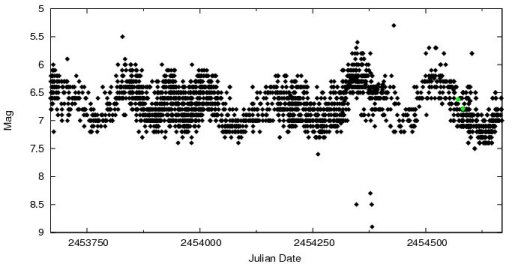
 |
The visual light curve of the semi-regular variable X Herculis is plotted against Julian Date. JD 2453750 is January 14, 2006, JD 2454500 February 3, 2008. The black points are visual estimates, the green ones more-accurate photoelectric measures. The star varies between magnitudes 6 and 7 with a rough 95 day period. Note the superimposed longer-period variation. Courtesy of the American Association of Variable Star Observers (AAVSO). |